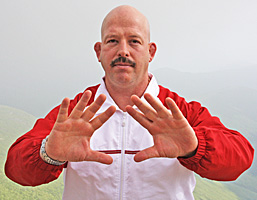Ever think there’s something missing in the way people are taught to set goals?
In most cases, you’re taught to think big, set goals that scare you, get out of your comfort zone, take massive action, change all your limiting beliefs and eliminate your negative self-talk.
Meanwhile, a much easier and far less time consuming approach is possible for you.
Consider the Principle of Momentum.
When you have momentum flowing for you, you’re almost impossible to stop.
It begins with something as simple as a positive daily habit that you stick with. Next thing you realize is that this positive habit is bearing fruit. It’s working wonders in your life that you might not have imagined when you began.
You established momentum when you took your first step forward, which made it easier to take the next step, and the next and the next.
When you’re not doing anything on a daily basis to achieve a goal, you have no momentum… no energy. When you’re creating a positive result every day, it’s hard to stop yourself.
So the principle of Momentum is activated with small steps, with daily habits and daily goals. It is NOT activated by the idea of ‘massive action,’ as there is no such thing in the universe. You only get to take one step a time. You only get one breath at a time. You can desire more steps and more breaths at the same time, but sorry, that’s not how nature works.
Here what does work: If you nail at least one goal per day, after a month, you’ve “met” 30 goals and your confidence grows. After a year, you have 365 successes you can bank on. And now you can easily tackle bigger goals because you have Momentum on your side.
Meanwhile, so many of those with the big goals (not daily) feel as though they aren’t any closer than when they started. In short, they have no momentum.
As I frequently say, “Start small and you can have it all. Start too big and you’ll stumble on every twig.”
Here endeth the lesson.
Matt Furey

